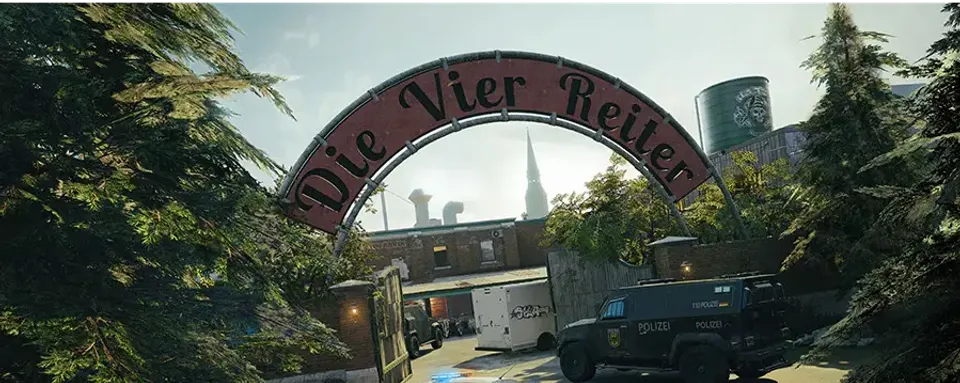
Clubhouse is one of the most popular maps in Rainbow Six Siege. Known for its combination of narrow corridors, open rooms, and versatile approach due to its many vertical and horizontal play options. Understanding the map is crucial for effective communication, coordinated strategies, and quick rotation. In this guide, you'll find a detailed overview of the standard callouts and key areas of each floor to help you and your team gain the upper hand on offense or defense.
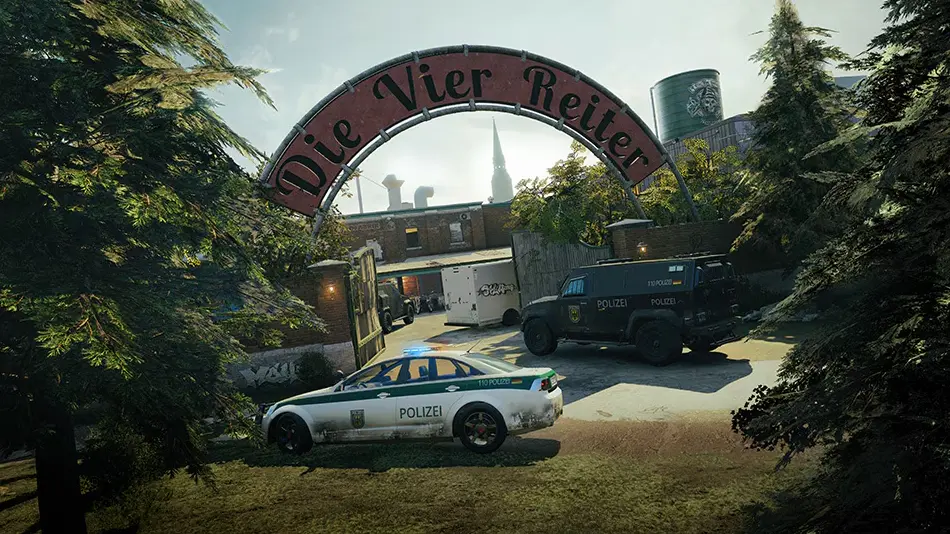
Why are callouts important?
Callouts are short, memorable names assigned to specific rooms, doorways, corners, and landmarks on a map. Instead of describing a location vaguely - “The enemy is in that room next to the kitchen!” - a concise callout like “The enemy is in the kitchen hall!” instantly conveys important information. Such a shared vocabulary reduces confusion, speeds up decision-making, and increases overall cohesiveness.
Understanding the Clubhouse layout
The Clubhouse is a three-story structure with well-known bomb-laying locations. The floors are as follows:
- Basement: Church, armory (armory), blue, dirty tunnel.
- Ground Floor: Bar, stage, stockroom, kitchen, strip club, lounge, garage.
- Top Floor: TV, cash room, catwalk, construction, logistics, bedroom and master bedroom, gym.
This vertical distribution of rooms provides many opportunities for the flanks, so controlling certain areas and hatches is very important for both attackers and defenders. Below we will summarize all the key points you need to be aware of for more successful communication within the team.
Basement
Key areas: church, armory, blue, dirty tunnel, long hall, back area, main staircase, blue staircase, bike (short).
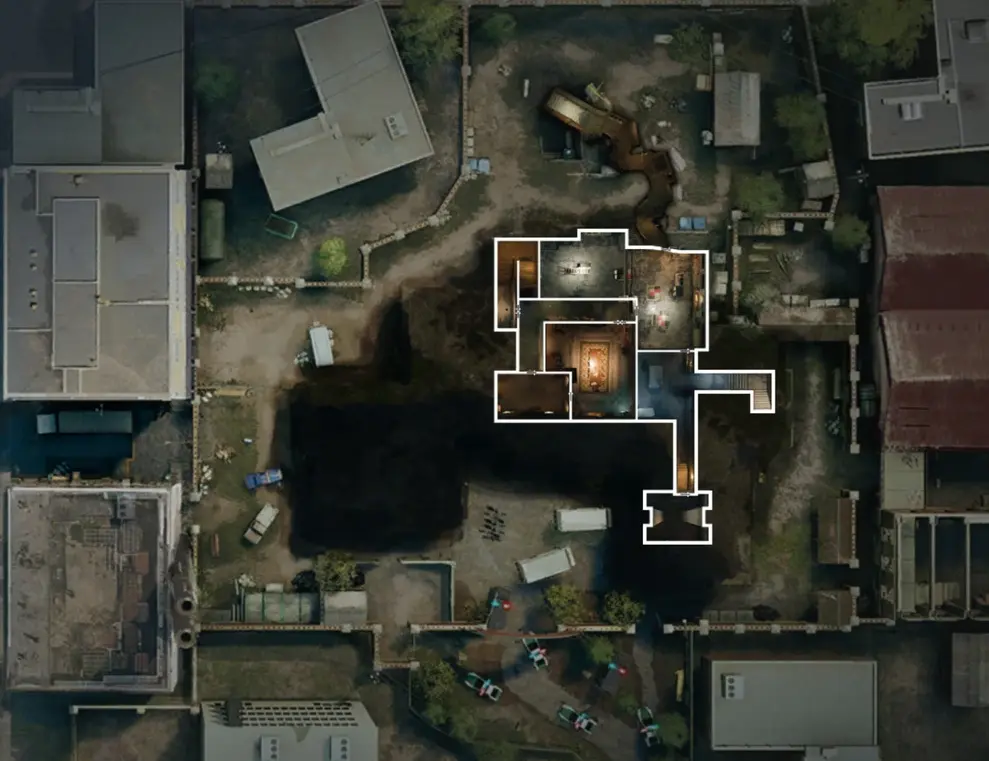
- Church: The main bomb site in the basement, where the defenders lurk to thwart attackers.
- Armory: Often used in tandem with the church as a bomb site. Reinforced walls and trapdoors center battles around limited entry points.
- Blue: Refers to the blue hall and the blue staircase leading to the armory. Gaining control of the blue hall is vital for attackers advancing into the basement.
- Dirty Tunnel: A narrow corridor leading directly into the armory, a critical entry point for attackers.
- Long and Short (corridors near the Church/Arsenal): Nicknamed for their shape and length, these corridors are stumbling points for both defenders and attackers.
- Main Staircase and Blue Staircase: The main vertical passageways between floors. By controlling these staircases, your team can make turns more safely.
- Bicycle: Often used to indicate a small warehouse near the church and armory.

Ground Floor
Key areas: Bar, drain, kitchen, living room, strip club, garage, main staircase.
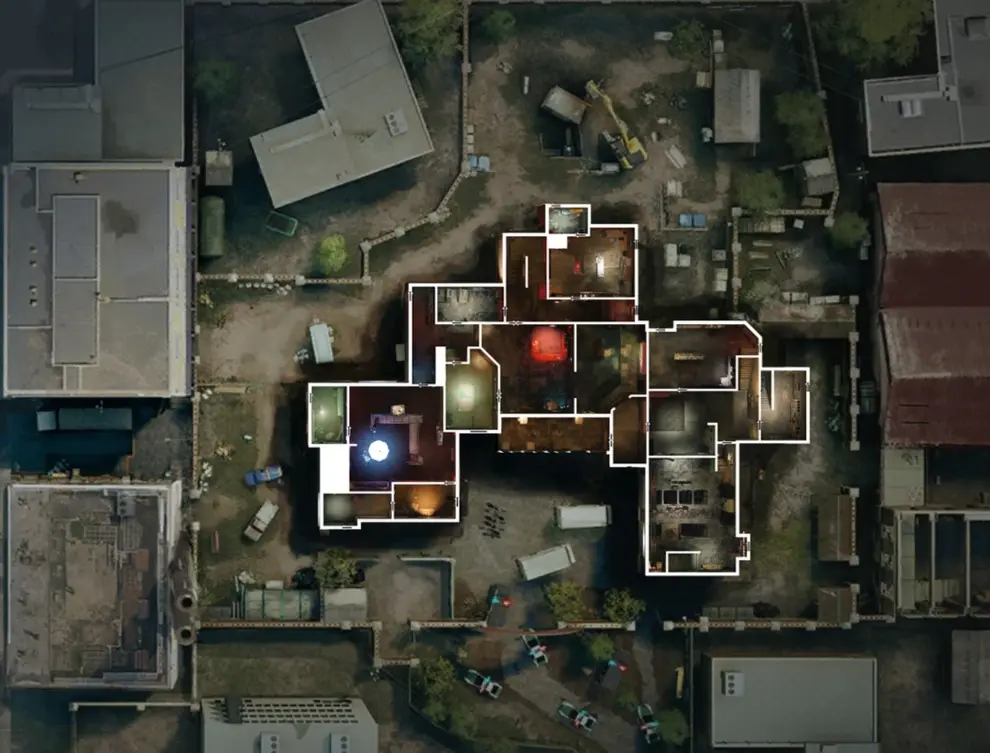
- Bar and Stage: The center of the first floor. Often used as a pivot point and alternate pathway. The bar provides access to the stockade and main hall.
- Drain (Storage): A room connecting to the north side of the map, often used by attackers to gain a foothold.
- Kitchen and Inn: Important for vertical play in the basement. By lowering the hatches in the kitchen, you can give attackers quick access to the armory.
- Strip club and front lane: An area often used by attackers to gain map control and security before breaking into the bar or transitioning to other rooms.
- Main Staircase: Another transition zone connecting the Bar and Main Staircase. If you open the trapdoor, you can access the Blue Corridor below.
- Garage: A strategic area for vehicle control and access to the catwalk. By holding the garage, intruders will not be able to easily take over the CCTV cameras.
Top Floor
Key areas: TV, cash room, construction, bedroom, gym, master bedroom, logistician's office, corridors.
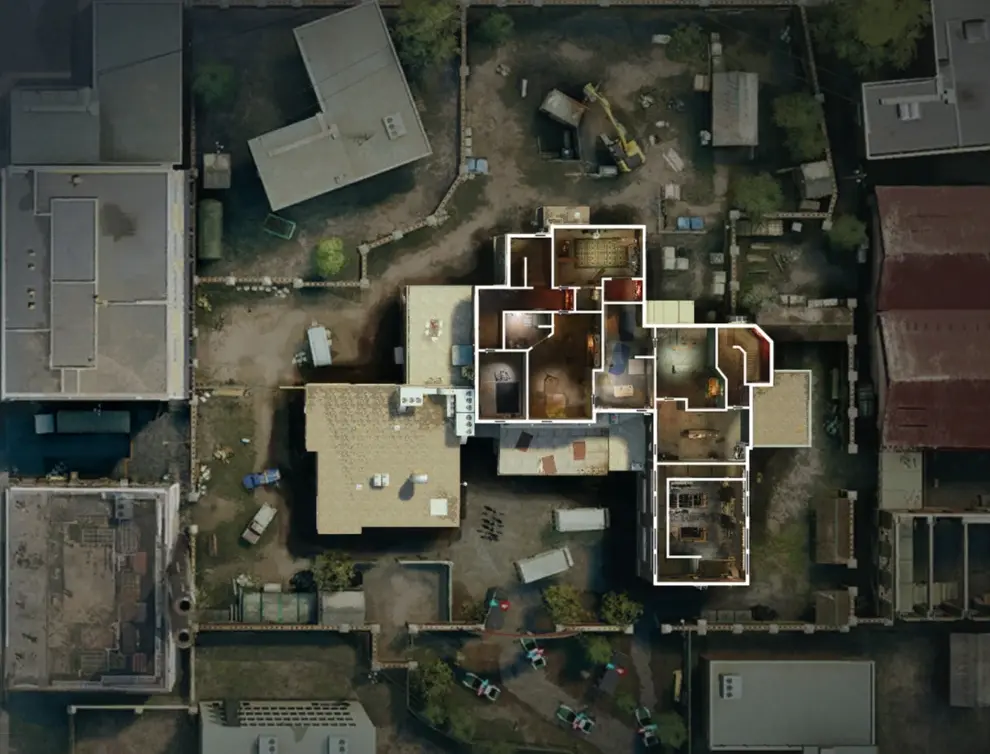
- TV: A critical room that is often chosen as a bomb site. The “CCTV wall” on the east side is a common entry point for intruders.
- Cash Room: Adjacent to the TV, this room is often used as a bomb site. Here, defenders set up a crossfire while attackers attempt to plant a bomb.
- Catwalk: A high place inside the garage that overlooks the TV and cash room.
- Construction: A connecting room that provides a turnaround to the bedroom and logistics office.
- Logistics: A small office that gives defenders a view of the bedroom and serves as a staging area for rotations.
- Bedroom and master bedroom: Frequent strongholds for defenders, especially when defending the second floor. The master balcony is a frequent point of entry for attackers.
- Gym: Sometimes used to hold the second floor, not always a primary target, but control of the gym and its hall can block attackers' approaches.
Tips for effective use of appeals
- Stick to universally recognized and simple titles. Overly complex names slow down communication.
- Combine location with action or information: “Two pushing a blue” or “Diffuser at a construction site.”
- Mention “over” or “under” when conveying information. For example, “The enemy is over the kitchen” will help your team learn about the vertical threat.
- Knowing how rooms connect will help you predict enemy movement.
Mastering short names (callout) is an invaluable skill that enhances your team's communication and effectiveness. Through the use of short and common names, everyone knows exactly where threats are coming from and where to turn. Whether you're breaking into the “armory,” holding “TV” against a breakout, or flanking through the “formation” to the “bedroom,” consistent names ensure more teamwork, better strategy, and ultimately more wins.



No comments yet! Be the first one to react